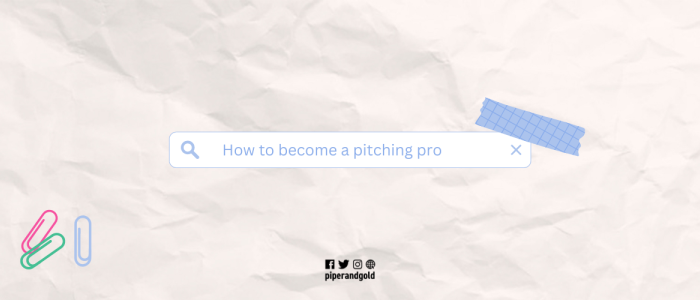
From classroom to camera: How educators can ace media interviews
Mar 11, 2025
Category: PR strategy
Services: Media Relations
Careers and education are hot topics in the news. But it’s tricky to get people to understand when they don’t know much about these topics. Educators – especially those in career and technical education – are uniquely poised to partner with the media, tell stories that shape people’s futures, address tough questions and tricky situations with grace, and gain confidence to actually do all that stuff.
But, what are these fancy strategies?
Here’s the good news: we have media relations tools and techniques you can incorporate to ensure you are well-prepared for any interview scenario you may encounter. Media relations and interview preparation are essential for you to build awareness, credibility and trust among your audience, and it's a skill you CAN master.
Our founder and CEO, Kate Snyder, and director of client solutions, Kayla Collins, presented at the Michigan Career Education Conference on the importance of media relations skills for educators. Kate and Kayla’s presentation covered a lot of information about how to prepare for a media interview successfully.
Here are their top tips to prepare for media interviews, feel more confident and get your stories published:
1. Understand the media landscape.
When we think about the media, we often think of a news anchor who is reading today’s biggest stories, but they are only one piece of the media puzzle. The media landscape is broad, ranging from editors and producers to podcast hosts and interns.
For educators new to media relations, here’s the real flow: A reporter gathers and tells the stories and often deals with multiple story deadlines assigned in the morning and due in the afternoon. The editors decide which stories will run, so you want to frame your story in a way that is meaningful to their audience. Think: What’s in it for the media (not what’s in it for me). Once a reporter gets back to the station, producers piece the story together to ensure it fits into the show’s narrative or format needs, but this might be the reporter’s job too depending on the size of the news team and other priorities that day. Or a single story could need a text write up for the website, a digital featurette for social media AND a traditional segment for the 6 p.m. News.
And that’s just for television news. Print, online news, radio, specialty shows, podcasts, blogs. It’s a lot.
Everyone plays a different role to achieve the same outcome: to tell stories that matter. You play a role too. As the interviewee, you deliver a clear and confident message. You’re not just providing information, you’re building a relationship with the media to ensure quality, factual and important information reaches the public.
2. Ask questions.
A lack of control is one of the biggest reasons people are often wary of doing media interviews, shared Snyder. “You have control in a media interview. You are not powerless, and the reporter is not your adversary,” she said when discussing the conversation with educators.
When a reporter reaches out, the best way to ensure you feel in control is asking questions to understand what they’re hoping their audience better understands as a result of the interview. Questions show you who they are so you can get to know them (they are a person, too!). Get to know their perspectives and motivations to ensure you are aligned on the focus and goal of the story, and the key points the reporter wants to focus on.
It’s helpful to ask how they’re approaching the story and the format they use. This helps you understand if it’s a quick news piece or a more in-depth story. Finally, ask what their deadline is. This allows you to notify your organization and prepare for the story to go out. Prepare to reconnect with the reporter to follow up on the article or connect them to your team members for future placements, too. Relationships go two ways.
3. Do your research.
Research your reporter first. Understand what topics they cover, how you fit into their work and their sense of style. Check their social media profiles to uncover aspects of their personality they might not share in their work. This helps you find common interests and develop a relationship with them.
Also, research the media publication itself. Read other stories to understand the overall tone and reputation of their work. Look for any previous coverage they have done on your organization and look for hints on what they might ask you. Try to look for quotes from other interviewees and ask yourself, “What question likely led to this answer?”
4. Develop key talking points.
Now it’s time to prepare talking points. Focus on what matters most. Start with that. Say it often. Say it different ways. Say it first, and say it last. Keep your message as straightforward as possible to ensure the audience understands it. Consider the audience of the reporter and outlet to ensure you are using words everyone understands.
Prioritize the most important issues or topics that align with your goals and keep it short to keep the audience’s attention. Tell a compelling story or utilize powerful statistics to catch the audience’s attention and make a lasting impact.
5. Command the conversation.
Did the interviewer just ask you a difficult question? It happens! Take a deep breath to pause and think. It’s okay to pause! Look at your talking points and remind yourself how you want to reply. But, never say “no comment.” This short phrase can have BIG repercussions, making people assume you’ve done something wrong or have something to hide. Instead, say “I’m not the best person to answer that question” or “That’s outside of my expertise.” The reporter will probably move on.
Bridging is an interview technique that lets you answer the question while also covering points you want the audience to know. Say something like, “It’s important to remember that…” or, “Before we get off that topic, let me just add…” to shift to another topic you are more comfortable with. Never start with a bridge. Instead, start with the reporter’s question and use the bridge to move to another topic the reporter might not have thought of.
6. Be yourself!
Authenticity is key in the media. Be authentic to who you are and who your organization is. Use all of the tools given to you and approach with confidence. This is your opportunity to show off your knowledge and skills and make an impact on people’s lives. There is no better media relations technique than letting your passion show, and being your real, authentic self.



